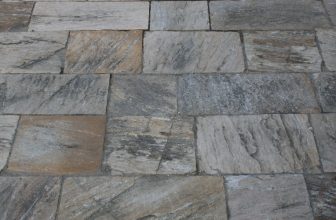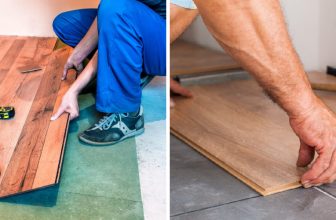How to Remove Urine Stain from Wood Floor
We all love our furry little friends, but pet stains are a nightmare when it comes to maintaining hygiene standards, especially on wood floors. Urine stains can cause severe damage to your hardwood floors if not removed promptly and effectively. Urine stains can also give an unpleasant odor in your home. Therefore, you must act fast to remove these stains. In this blog post, we will guide you on how to remove urine stain from wood floor.
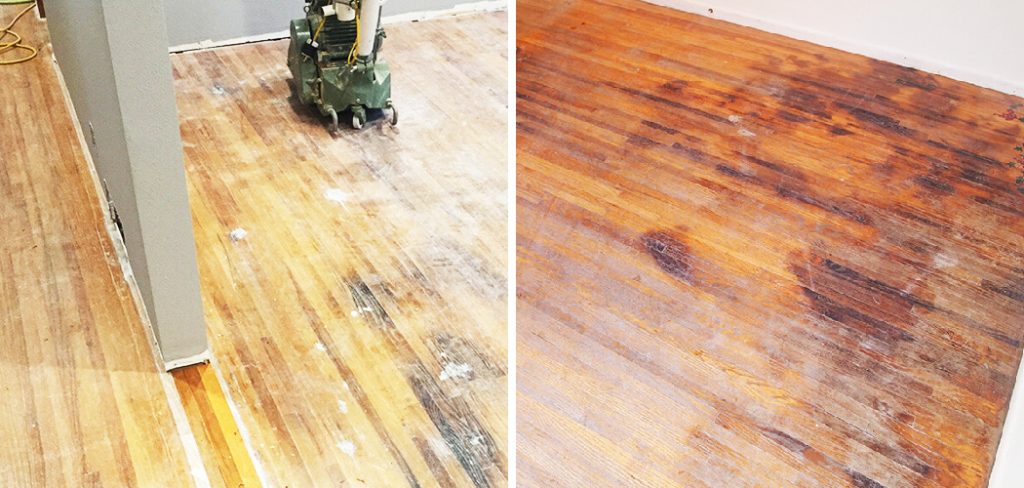
Can You Remove the Urine Stain from the Wood Floor?
Finding a urine stain on your beloved wood floor is an unwelcome surprise for any homeowner. However, with a bit of patience and elbow grease, removing the mark and restoring your floor’s former glory is possible. Despite the potentially stubborn nature of urine, various methods are available to tackle the issue.
From using baking soda and vinegar to sanding and refinishing, it ultimately comes down to the severity of the stain and your familiarity with home repair. So, fear not; if you’re willing to put in the effort, that embarrassing spot on your floor will soon become a distant memory.
Why Should You Remove Urine Stain from Wood Floor?
Urine stains on wood floors can be unsightly and unsanitary. Not only do they look bad, but they can also create a foul odor in your home. If you have pets or young children, accidents may happen on occasion.
However, it’s essential to promptly take care of urine stains on wood floors. If left untreated, the wood can absorb the urine, leading to permanent stains, warping, or mold growth. Plus, the bacteria in urine can create a breeding ground for germs, posing a health risk to you and your family. Removing urine stains from wood floors is beneficial to your home’s appearance and hygiene.
Bye-Bye Stains! – A Complete Guide on How to Remove Urine Stain from Wood Floor
1. Gather and Prep Your Equipment
First, you must know that the process of removing urine stains from a hardwood floor isn’t a challenging one. All you need is to gather some standard cleaning equipment: a mop, a bucket, some paper towels, and a carpet cleaner. Before starting the process, make sure to prep the floor. Begin by wiping out the excess urine and blotting excess moisture using a clean paper towel.
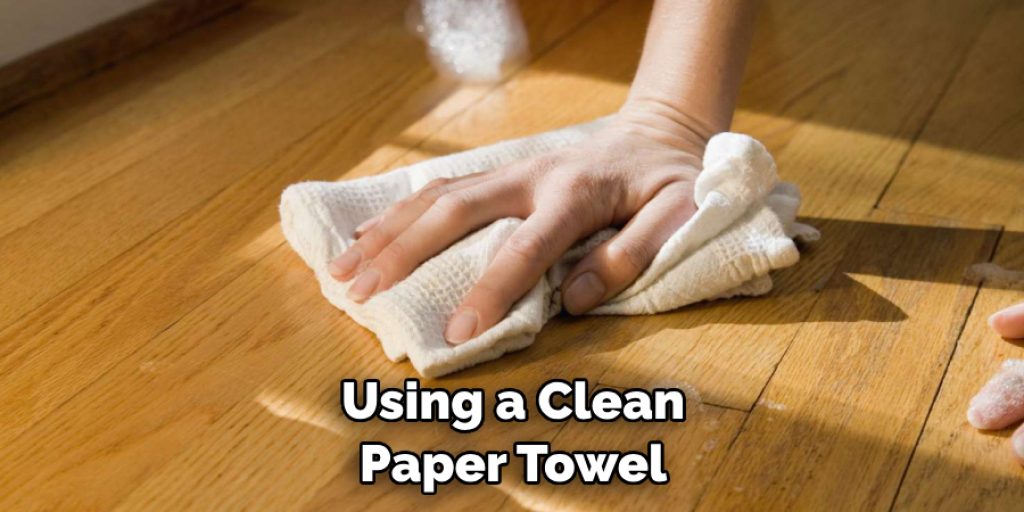
2. Create a Vinegar and Water Solution
Vinegar is an effective solution for removing urine stains from wood floors. Mix one part vinegar with three parts of warm water into a bucket to create your cleaning solution. Vinegar is an acidic solution that neutralizes and dissolves the uric crystals in the urine stain.
3. Apply Your Vinegar and Water Solution
After creating the vinegar and water solution, use a mop to apply it to the urine stain. Soak the mop in the solution and press it down onto the spot for at least five minutes. Be cautious not to spread the stains around the floor.
4. Rinse the Area With Clean Water
After soaking the urine stains with vinegar and water solution and waiting for at least five minutes, rinse the area with clean water. Remove any excess vinegar residue using a clean mop and warm water. Leave the area to dry naturally, or use a paper towel to blot excess water.
5. Use a Carpet Cleaner
If you note that the urine stain has penetrated the hardwood flooring, you may require a more potent solution than the vinegar and water mixture. A carpet cleaner can work wonders in removing some of the toughest stains. Follow the instructions on the bottle and apply the cleaner to the affected area, ensuring you avoid droplets and stains spreading.
6. Try Hydrogen Peroxide
If vinegar and water solution, as well as a carpet cleaner, do not work in removing the urine stain, hydrogen peroxide can be used as an alternative. Dilute it with water using a ratio of 1:2 and apply it to the affected area using a sponge. Let it sit for at least 10 minutes before rinsing with clean water and drying.
7. Sand and Refinish
If the urine stain has been on the wood floor for an extended period, it may have caused discoloration or even penetration into the wood fibers. In such cases, sanding and refinishing the affected area may be necessary to remove the stain completely. However, this should only be done as a last resort after trying all other methods, as it may damage the finish of your hardwood floor.
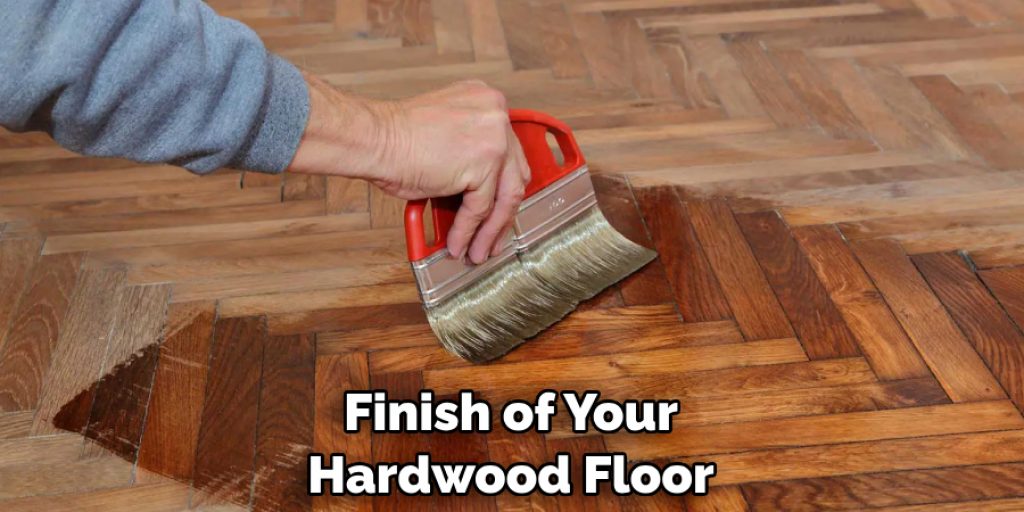
By following these tips, you can effectively remove urine stains from your wood floors and restore their natural beauty. Remember to act quickly and address the stain immediately for the best results. Regular cleaning and maintenance of your hardwood floors can also help prevent future stains and keep them looking pristine.
5 Considerations Things When You Need to Remove Urine Stain from Wood Floor
1. Identify the Source of the Urine Stain
The first step in removing a urine stain from a wood floor is to identify the source of the stain. If it is from a pet, you may need to take additional steps to ensure your pet does not return to the same spot. If it is from a human, you may need to take additional steps to ensure that they are using proper hygiene habits.
2. Blot Up Excess Urine
Once you have identified the source of the stain, you should blot up any excess urine with a clean cloth or paper towel. Be sure to blot gently so as not to spread the urine further into the wood flooring.
3. Clean and Disinfect The Area
Once all of the excess urine has been blotted up, it is important to clean and disinfect the area. You can mix one part white vinegar with two parts warm water and then apply it directly onto the affected area with a clean cloth or sponge. Let this sit for approximately 10 minutes before rinsing off with warm water and drying thoroughly with a soft cloth or paper towel.
4. Apply an Enzyme Cleaner
After cleaning and disinfecting the area, applying an enzyme cleaner specifically designed for removing urine stains from wood floors is important. These cleaners contain enzymes that break down proteins found in urine, which help remove even stubborn stains from wood floors without damaging them.

5. Seal The Wood Floor
The last step in removing a urine stain from a wood floor is to seal it with an appropriate sealant, such as polyurethane or wax-based products designed specifically for wood floors. This will help protect your floor from future damage caused by moisture and other contaminants that could cause staining or discoloration over time.
5 Benefits of Removing Urine Stain from Wood Floor
1. Improved Appearance
One of the main benefits of removing urine stains from wood floors is that it can help improve the floor’s overall appearance. Urine stains can be unsightly and detract from a room’s beauty. Removing these stains can help restore the original look and feel of the wood floor, making it look new again.
2. Reduced Odor
Urine stains on wood floors can also lead to unpleasant odors in a home or office. These odors can be difficult to get rid of, as they tend to linger for long periods. Removing urine stains from wood floors can help to reduce these odors, making your space more pleasant for everyone who visits.
3. Protection From Damage
Removing urine stains from wood floors can also help to protect them from further damage. Urine is acidic and can cause discoloration and warping if left untreated. Removing the stain quickly and properly can help to prevent any further damage from occurring.
4. Prevention Of Mold And Mildew Growth
Urine stains on wood floors are also prone to mold and mildew growth if not removed quickly enough. Mold and mildew thrive in damp environments, so it is important to remove urine stains as soon as possible to prevent their growth on your flooring surfaces.
5. Improved Air Quality
Finally, removing urine stains from wood floors can help improve air quality in a home or office by eliminating any lingering odors caused by the stain, mold, or mildew growth. This improved air quality will make it easier for everyone in the space to breathe and enjoy their time there more fully without worrying about unpleasant smells or musty air quality issues due to urine residue left behind on a wooden surface.

Some Common Mistakes People Make When Trying to Remove Urine Stain from Wood Floor
Removing urine stains from a wood floor can be daunting, especially if the stain has been there for a while. It’s not uncommon for people to resort to some questionable techniques to get rid of the stain – some of which might even do more harm than good.
One common mistake people make is using harsh chemicals to clean the floor. Chemicals like bleach or ammonia can cause discoloration or damage to the wood. Another mistake is not acting fast enough. If you leave the urine stain to sit for too long, it can seep deep into the wood fibers, making it much harder to remove.
It’s also important to avoid using steam mops on wood floors. The high temperature and pressure can cause the wood to warp or buckle. By avoiding these common mistakes, you’ll have a better chance of effectively removing urine stains from your wood floor without causing any damage.
Conclusion
In conclusion, removing urine stains from hardwood floors can be straightforward as long as you know how to proceed. The most crucial step, however, is acting quickly after noticing the stain. Immediately cleaning the area with vinegar and water or a carpet cleaner can save you from any further hardwood damage.
We hope that the steps outlined above will guide you in removing any urine stains from your hardwood floors and help keep your home clean and hygienic. Thanks for reading our post about how to remove urine stain from wood floor.

